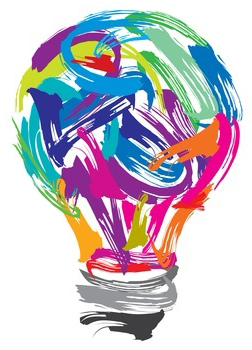 “Art is theft” is a well-known quote by Pablo Picasso. One might think a genius such as he would have plenty of original ideas and that taking those of another would never be contemplated or necessary. Think again. Reading biographies of artists of his era you hear about the creative and exciting culture of Paris in the 1920s. We all know what they did in influencing the transformation of the world of art and literature, and how the constant interaction amongst these talented artists, and the sharing and stealing of ideas, made each of them better at their craft. Who created something first was never the question — who took it to the next level, or in another direction, received the recognition.
“Art is theft” is a well-known quote by Pablo Picasso. One might think a genius such as he would have plenty of original ideas and that taking those of another would never be contemplated or necessary. Think again. Reading biographies of artists of his era you hear about the creative and exciting culture of Paris in the 1920s. We all know what they did in influencing the transformation of the world of art and literature, and how the constant interaction amongst these talented artists, and the sharing and stealing of ideas, made each of them better at their craft. Who created something first was never the question — who took it to the next level, or in another direction, received the recognition.
In his charming and whimsical small book “Steal Like an Artist — 10 Things Nobody Told You About Being Creative” Austin Kleon explores how creative people work and how smart people steal from other smart people. For a list of many of his quotes, go to Good Reads — Austin Kleon.
There is a talent for knowing who to imitate and what to avoid. Collect ideas in a curatorial way, very selective, always editing, attempting to find the best of the best, and not randomly gathering things like a hoarder. Those who are idea generators are always cautious, so as to never get stuck on a weak or overplayed idea. They fear they’ll waste time and other resources, or worse, get sidetracked or distracted.
“There is nothing new under the sun” (Ecclesiastes 1:9) proves to be true but it doesn’t mean you can’t look at a challenge from another perspective or give it a new application. (How many medications started out as a cure for one malady only to prove to be more effective combating a different illness?) How many times have we heard of inventions that two people, in vastly different circumstances, “discovered” at the same time. Who gets the credit for what ultimately became Facebook? The Winklvoss twins or Zuckerberg, or was it happening on many other campuses, simultaneously, for anyone to steal?
Another tip on how to steal like an artist is to acknowledge and honor the fact you are a blend of genetics, cultures, experiences, and luck. Make the most of everything by applying your education, curiosity, and the thoughts of those you interact with to everything you do. Refuse to limit yourself to thought silos and preconceived or attributed labels such as, “I have a tin ear” or “I never was good at math.”
The artist Chuck Close is legally blind; Beethoven still wrote music when deaf. What has Stephen Hawkins proven to all of us? Creativity requires rigor and immunity to, or acceptance of, failure. “I don’t regret the things I’ve done, only the things I didn’t do when I had the chance” is a slogan, of unknown authorship, heard from many thought leaders.
There’s boldness to creative people. I know a set designer who no matter what he is asked to create agrees to the project. “I’ll figure it out — it’s half the fun.” It often becomes his best work. He might have a little trepidation but that only makes him work harder, move forward, and not shy away.
Have you ever noticed big idea people seem to have numerous interests and hobbies, and surround themselves with experts whom they might not agree? Think Supreme Court Justices Antonin Scalia and Ruth Bader Ginsberg – constitutionalist and liberal, both opera lovers. It’s because they value intellectual stimuli, and can tolerate differences, that they can know, love, and take from one another. Variety of ideas is their oxygen.
Creativity can be boring. Grinding out the formulas, reworking a painting, practicing a dance piece, over and over, has certain monotony. Michael Jordan was the first and last person on the basketball court for every game. Was it because he didn’t know how to shoot? Of course not. He understood that finesse was a talent but skill was learned and practiced. The ability to accept and tolerate that speaks to commitment and brain stamina; it is visible in the creativity process.
The indomitable designer Coco Chanel often told editors, “If an ensemble isn’t working, subtract a piece.” It is wisdom many great creators share — getting down to the essence of the problem rather than piling on another element. It’s striving for an elegant solution.
What are some practical steps you can take to increase your creativity quotient?
- Increase your network of interesting people.
- Create a vision board or do a grape cluster (see my article on using the grape cluster technique).
- Travel — around the world, around the block, around the office.
- Start swipe files — mine are in boxes and a desktop file with labels such as “Fun,” “Go See,” “People You Should Know,” and so on.
- Set aside think time.
- Immerse yourself in traditional and pop culture.
- Willingly share your ideas with others.
- Make friends, not enemies.
- Get a hobby.
- De-clutter your space and your brain.
In conclusion, I’ll quote David Bowie, “The only art I’ll ever study is stuff that I can steal from.”
Leave a Reply